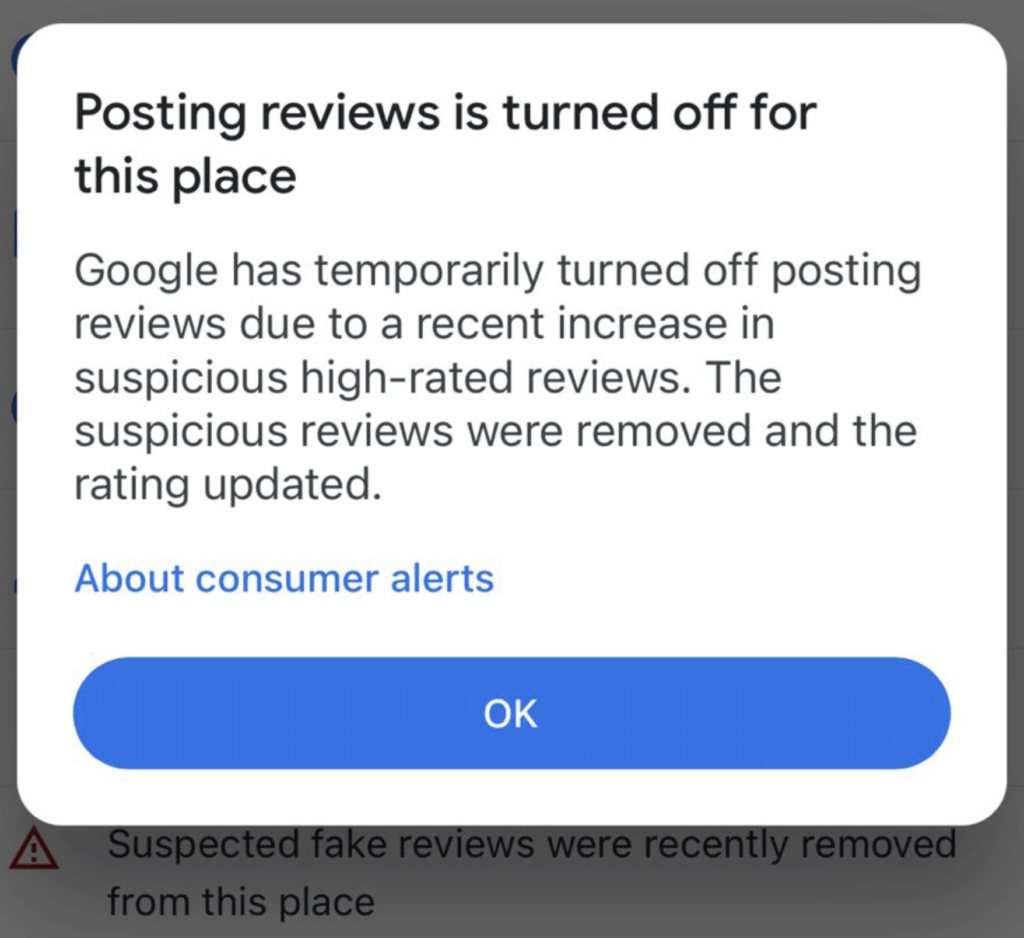🤓 The 2026 Local Search Ranking Factors are here!! Check out the report!
🤓 The 2026 Local Search Ranking Factors are here!! Check out the report!

Recently, we looked at the rainbow of six outstanding local business review powers. Now that you understand the full spectrum of their potential to help you operate a better, more profitable business, you’re likely wondering how to get more of this UGC (user generated content) treasure. So, today, we’re going to cover:
I’ve got a very full list of ideas for your use, but before I roll it out, there’s a simple principle that we can derive from all the review surveys that have ever been published:
Typically, you’ll get more reviews if you ask for them.
It makes sense, but a review survey I conducted a few years back found that it had been years since some respondents had received a single review request from a local business. So, the first step towards earning a greater number of more effective reviews is to commit to actively requesting them. If we agree on this, we’re ready to move forward towards your goals!

Because of the significant impact of reviews on consumer behavior, local search rankings, and brands’ bottom lines, some business owners exploit Google’s system and violate their countries’ legal rulings by engaging in review-related tactics with the goal of fooling the public. If caught, the business may not only find its Google Business Profiles labeled with warnings like the one captured above by Mike Blumenthal, but it may also become subject to lawsuits and fines.
To be sure you’re acting in good faith when it comes to reviews and don’t accidentally get lumped in with spammers and scammers, rigorously avoid all of the following forbidden practices:
Honesty is the only policy that will protect your local community and your brand’s precious reputation. Read Google’s Prohibited and Restricted Content guidelines for a detailed explanation of what they do and don’t allow in the review portion of Google Business Profiles. Happily, there are plenty of above-board ways to earn legitimate reviews, and we’re ready to move on to my big list!
Consider this your starter list for getting a professional review acquisition program up and running at your local business:
Use both mediums for review requests. A recent study from GatherUp found it significantly increases the number of reviews you receive per request.
Use our free review link generator so that customers can move directly from a review request to the review section of your Google Business Profile.
If your customer base isn’t super tech-savvy, be sure to write out instructions for leaving a review when you make a request.
By actively asking for reviews, you are sending the message that you’d appreciate detailed feedback, which could help reviewers be more thorough in what they write than if they just write of their own volition. Longer reviews will naturally include more keywords.
In scenarios where it’s not possible to collect emails or SMS numbers, instruct staff to mention at the time of service that a review would be appreciated.
Put review requests on menus, receipts, brochures, flyers, mailers, magnets, shopping bags, store signage, and other physical assets.
Put guideline-compliant review requests on your website. This might include on your reviews/testimonials page, location landing pages, contact page, product/services pages, and about page.
Put review links on digital assets, such as email receipts and newsletters.
If there is a new or specific aspect of your business for which you’re hoping to increase your local search results visibility, word review requests to let patrons know you’d especially appreciate their sentiment on this topic. For example, if your restaurant has just debuted a new taco, let diners who try it know that you would be so grateful if they would review the taco, instead of just the business, in general.
In 2023, NearMedia summarized the findings of a university study which discovered that businesses which requested reviews within 24 hours of a transaction actually received fewer reviews than those which made no requests in that time frame. It’s possible that immediate requests might cause annoyance for the consumer.
Meanwhile, the same survey found that review solicitations that occur 9-14 days after a transaction prompted the most reviews. These are extremely interesting data points, but they should be taken as an incentive to do your own proprietary research on the best review request time window for your brand. Every industry and community is unique.
Be sure you are responding to all your reviews as a signal to your community that you read and value their UGC. In fact, if the brand you’re marketing has neglected its reviews in the past, you can start to turn over a new leaf today by responding to past reviews, even though they are old. This will immediately send the message that someone has turned the lights on at the business.
Don’t only focus on Google Business Profile reviews. Wherever your requests are present, include a variety of review platform options so that reviewers can leave feedback wherever they are most comfortable. Just be sure you’ve read the guidelines of any review platform with which you’re engaging.
Don’t only focus on third-party reviews (reviews left on third-party platforms). Acquire first-party reviews in multiple formats, including text, video, and audio reviews.
Don’t overlook the value of being reviewed by both professionals and hobbyists. If your industry or community includes professional review publications, blogs, podcasts, video channels, or influencers, being reviewed by these entities can contribute to the renown of your business and the desire of the public to experience and review it.
If you serve a multilingual community, be sure that review requests are present in appropriate languages.
Multiple surveys suggest that a key motivation for writing reviews is to reward businesses for having provided great customer service. If your review stream is stagnating, it may be time to re-examine whether your brand or particular locations of your business are providing exceptional customer experiences worth writing about.
In a franchise scenario, be sure franchisees have access to all the tools, tech, guidelines, and policies they need to effectively request and respond to reviews for their locations.
To guard the review volume you’ve achieved, actively monitor your Google Business Profiles to be sure you are aware if review loss occurs so that you can investigate whether a temporary bug or a more serious problem like a suspension has occurred.
The scope of my list of review acquisition and management tips makes it pretty clear that a great deal of work is involved in this aspect of local search marketing.
If you’re the sole proprietor of a very small business, budget may dictate that you’re having to manage all aspects of your online reputation manually. This can be feasible, but it is time-consuming and the risk is that you may find yourself sometimes neglecting core review-oriented tasks because you are simply too busy. This can result in an erosion of your average Google star rating over time, because of liabilities like neglected negative reviews. Meanwhile, you may be leaving profits on the table because you aren’t finding the necessary time in your schedule to commit to a full reputation management program. It could be that, when your business first launched, you were only having to cope with a small number of reviews, but as you’ve become more successful, the sheer UGC volume is growing unwieldy and customers are going un-thanked or unaddressed.
In the larger local business setting, you need a reputation management strategy that scales across multiple locations, departments, practitioners, franchise branches, and service areas. It’s serious work that shouldn’t be lumped in under the broad heading of “listings management”. It requires a variety of nuanced customer service and marketing skills and lots of time.
The more competitive your market or complex your business model, the more an investment in professional reputation management software makes sense. Having an organized dashboard for requesting, responding to, and analyzing reviews makes scaling these activities so much easier for multi-location brands, and can motivate you to build this vital form of marketing into your daily planning. Whether your business is large or small, there is a good chance that reviews could be doing so much more for your reputation, rankings, and revenue with a more professional and committed approach.
Today, we’ve learned that you’ll typically get more reviews if you ask for them, but that there’s a right way and a wrong way to approach online reputation management. Google’s struggle to catch review spammers is ongoing, but countries like the US are becoming increasingly serious in their legislation surrounding review practices that are designed to mislead consumers. Fortunately, you have a plethora of options for honest review acquisition that respects your local community and the law.
High-quality reputation management tools can help you organize and optimize review-oriented tasks and prevent the kind of neglect that can lead to reputation erosion. When professionally managed, online local business reviews are an evergreen gift that keeps on giving to brand owners and local search marketers who learn to unwrap full UGC potential.
Miriam Ellis is a local SEO columnist and consultant. She has been cited as one of the top five most prolific women writers in the SEO industry. Miriam is also an award-winning fine artist and her work can be seen at MiriamEllis.com.


Whitespark provides powerful software and expert services to help businesses and agencies drive more leads through local search.
Founded in 2005 in Edmonton, Alberta, Canada, we initially offered web design and SEO services to local businesses. While we still work closely with many clients locally, we have successfully grown over the past 20 years to support over 100,000 enterprises, agencies, and small businesses globally with our cutting-edge software and services.